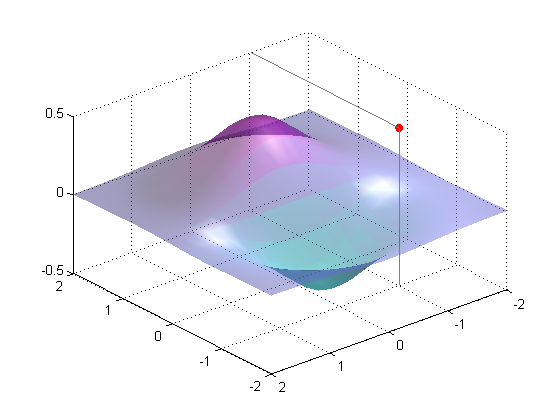

Which seems to have numerical problems for the limited dataset you gave. Similarly, you can do a second order fit: %second order fit %least square solution of z = M * k1, so z = k1(1) + k1(2) * x + k1(3) * y

There might be some better functions on the file-exchange, but one way to do it by hand is this: x = a(:) %make column vectors Zz = x2fx(, 'quadratic') * C įinally there is an excellent function polyfitn on the File Exchange by John D'Errico that allows you to specify all kinds of polynomial orders and terms involved: model = polyfitn(data(:,1:2), data(:,3), 2) There is also a helper function x2fx in the Statistics Toolbox that helps in building the design matrix for a couple of model orders: C = x2fx(data(:,1:2), 'quadratic') \ data(:,3) We can do this manually: % best-fit quadratic curveĬ = \ data(:,3) Say we want to fit a quadratic model with constant, linear, interaction, and squared terms (1, x, y, xy, x^2, y^2). 'FaceColor','interp', 'EdgeColor','b', 'FaceAlpha',0.2)Īs was mentioned, we can get higher-order polynomial fitting by adding more terms to the independent variables matrix (the A in Ax=b).

Next we visualize the result: % plot points and surface % or expressed using matrix/vector product % evaluate it on a regular grid covering the domain of the data

There is a solution page by MathWorks describing the process.Īs an example, let's start with some random data: % some 3d pointsĭata = mvnrnd(,, 50) Īs showed, by constructing the desired design matrix, you can use mldivide or pinv to solve the overdetermined system expressed as Ax=b: % best-fit planeĬ = \ data(:,3) % coefficients To fit a curve onto a set of points, we can use ordinary least-squares regression.


 0 kommentar(er)
0 kommentar(er)
